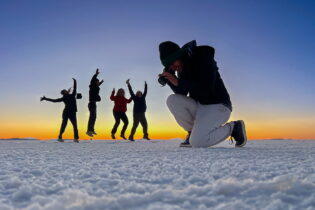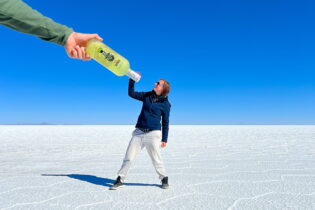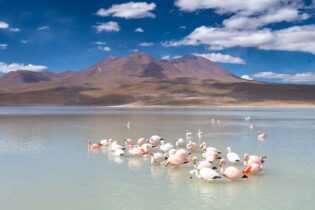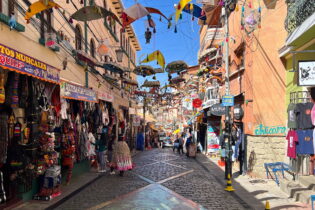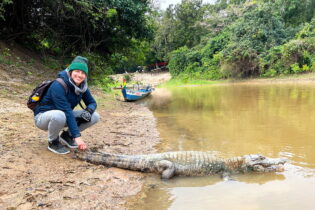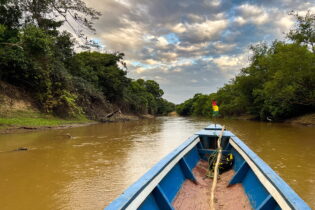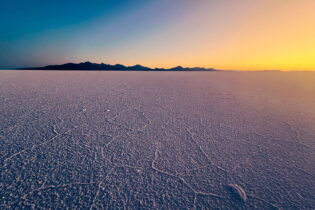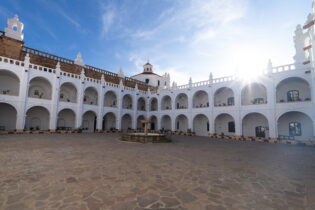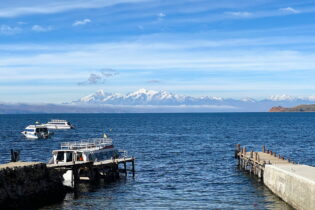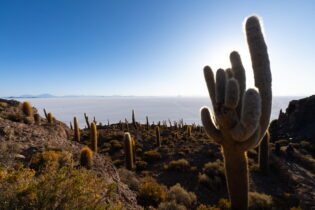
La Paz Death Road Copacabana Rurrenabaque Sucre Uyuni
Are you planning a trip to Bolivia? Here is a full travel guide with all the information you need.
For a 3 week trip to Bolivia, this itinerary is perfect to get a complete exposure of the country with all its highlights, or combine it with a trip to Peru or Chile.
La Paz: the largest city of Bolivia. Spend 3 days exploring the city, stop by the witches market, visit the moon valley and take a full day mountain bike tour to the most dangerous road.
Copacabana (Lake Titicaca): from La Paz take the 4 hour bus journey to Copacabana. If coming from Peru by bus, your entrance point into Bolivia will be Copacabana. Explore the town, but the highlight is taking the boat to Isla del Sol. Spend a full day walking the Inca trail from the North to the South side of the island.
Rurrenabaque (Amazon jungle): Fly into (or take a night bus) Rurrenabaque for a 3 day jungle experience in the Amazon. The pampas tour takes you along the Yacuma river where you will get close to hundreds of caiman, monkeys, capybara and more wildlife. You will stay in a very basic cabin with a minimum of facilities.
Sucre: The capital of Bolivia is Sucre. The city is small with all white colonial buildings in the center. Although the city itself can be explored in a day, travelers seem to hang around longer for the laid-back vibes.
Salar de Uyuni: the absolute highlight of Bolivia are the Uyuni salt flats. Take the 3 day tour through this unique landscape where you stay in salt hotels, visit the largest salt flat in the world, witness the most beautiful sunset in your life, see the stars in a hot thermal bath and have an everlasting experience. On the last day you can either go back to Uyuni, or continue your trip to San Pedro de Atacama in Chile.
Bus
From the bus terminal in La Paz there are an abundance of bus operators traveling across the country. I couldn’t find much information on which companies are recommended to use. If you’re planning on taking a night bus, be sure to have a full-cama with seats that recline a complete 180°.
Routes by bus:
La Paz – Copacabana
Sucre – Potosi – Uyuni
Airplane
Most of my long-distance travel in Bolivia was done by plane. It seems more safe (with my belongings) and of course more comfortable. For the route from La Paz to either Uyuni or Sucre it also avoided a roadblock in Oruro.
Routes by airplane:
La Paz – Rurrenabaque (return flight)
La Paz – Sucre
As I was traveling through Bolivia I often complained to myself about being cold at night. My biggest recommendation is booking hotels with a proper heater and a gas-powered shower to stay warm and cozy at night. These are my hotel recommendations in Bolivia to keep you comfortable and warm.
La Paz: Madero Hotel. I stayed in multiple hotels in La Paz and Madero was my absolute favorite. The rooms are immaculate, luxurious and warm. With an extensive breakfast buffet too.
Copacabana: Hotel la Cupula. Situated on the edge of Copacabana is La Cupula. The rooms are simple but with all the necessities such as a heater and a gas-powered hot shower. The owner speaks English and provided me with a map and all the info to visit Isla la Sol. The restaurant has delicious food too.
Sucre: Hotel Boutique la Posada. Right around the corner of the main square is this beautiful hotel with heating. The rooms are all situated in an inner courtyard which makes it really peaceful.
Uyuni: Tonito Hotel. This hotel might be overpriced for the budget travelers, but I love having a nice (and most importantly warm) hotel before starting my trip to the cold Uyuni salt flats. An extra bonus is the delicious pizza restaurant as part of the hotel.
The Spanish word for ATM is Cajero Automatico. During my travels through Bolivia I had the best luck with the ATMs of the banks BNB and BCP. Here I could easily withdraw 2000 bolivianos and didn’t have to pay a transaction fee.
I had a bit of a panic mode at La Paz airport, there were about 8 different ATMs and I wasn’t able to withdraw cash from any of them. After several tries I lowered my amount to 800 bolivianos and finally got a bit of cash to get going.
Bring a hot water bottle
Most of Bolivia is situated on the “Altiplano”, literally the high platform, meaning you’re at a high altitude of 3000+ meters. At these altitudes it can get cold at night! As heaters aren’t a common phenomenon in Bolivia, you definitely want to keep yourself warm in another way. My hot water bottle (bolsa de agua caliente) was truly my lifesaver throughout my trip. Each accommodation was more than willing to boil water to fill it up before going to bed.
Don’t book a tour in advance
All the tours can easily be booked at the location itself for a much better price than online.
To have immediate data access I used an eSIM through Airalo. The eSIM is US$36 for 5GB of data. Although it did last me throughout my trip in Bolivia, I had to be careful of my data use. The Airalo eSIM also uses the VIVA network, which doesn’t have great coverage. Often in rural areas I didn’t have the best signal.
My advice is to get a local SIM at one of the street vendors. Entel is the best provider with the most coverage. With a local SIM you also get more data for a much lesser price.

